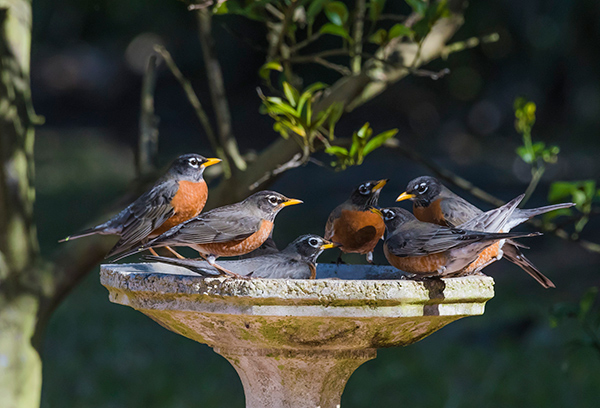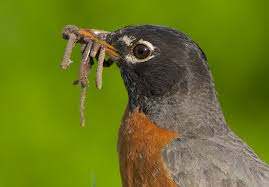Adapted from science.jrank.org

Robins are songbirds in the family Musicicapidae, in the thrush subfamily, Turdinae, which contains more than 300 species, including various thrushes, chats, solitaires, redstarts, nightingale, wheatear, and others. The members of this family, known as robins, tend to have dark backs and reddish breasts. Except for this superficial resemblance, these robins are not particularly closely related, other than being members of the same avian family. Like other thrushes, robins are highly musical, with rich and loud songs. Because some species of robins are relatively familiar birds that live in close proximity to humans, their songs are well known and highly appreciated by many people.
The European robin (Erithacus rubecula) is the familiar “robin red-breast.” Robins elsewhere were given their common name, robin, because of their superficial likeness to the European robin, which to many English-speaking colonists was a common and much-loved song-bird of gardens and rural places. During the era of European exploration and conquest of distant lands, these settlers longed for familiar surroundings and contexts in their newly colonized, but foreign countries. Consequently, they often introduced European species to achieve that effect, and named native species after familiar European ones with which there was a outward resemblance. As a result, many species in the thrush family were variously named “robin” in far-flung places that were settled by the British, including Australia, Asia and North America. The Australian robins come in pink, red (Flame) and yellow.

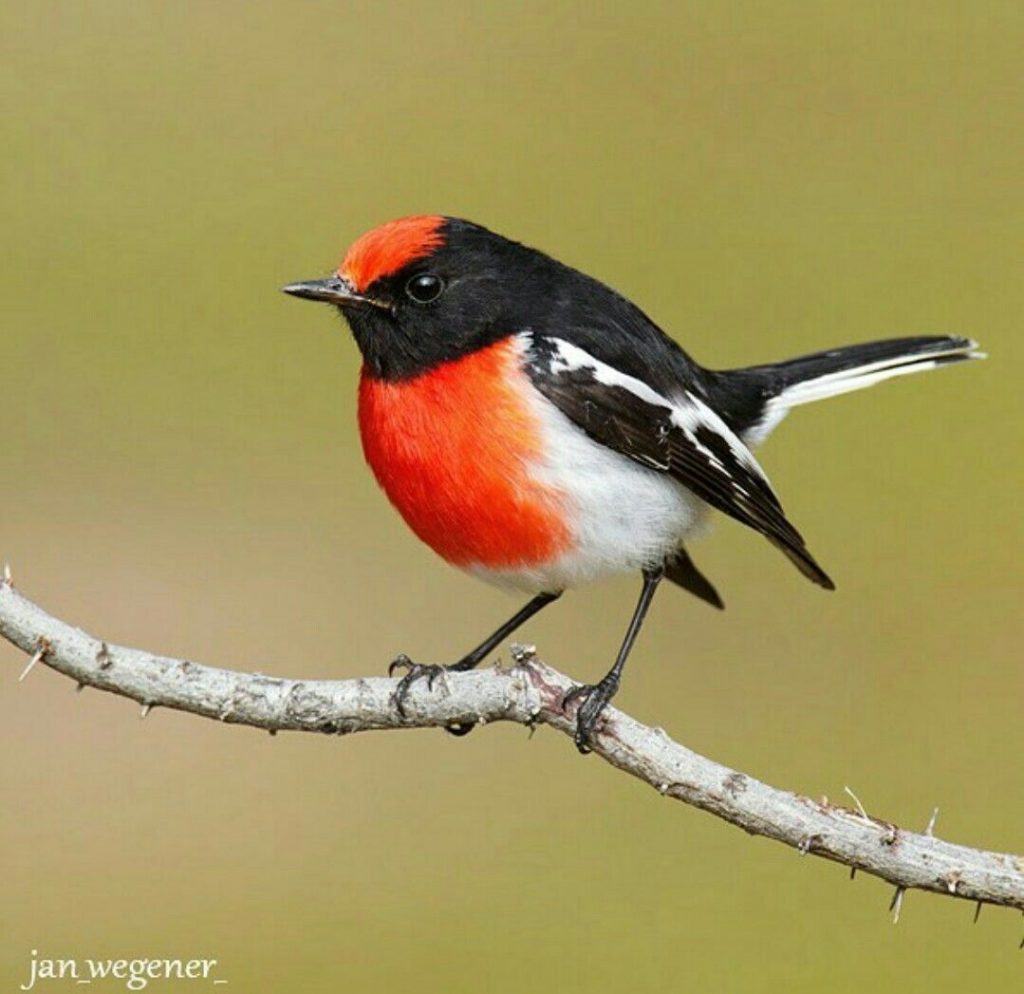

The European robin has a body length of 5.5 in (14 cm), an olive-brown back, a white belly, and a orange-rust breast and face. This species is common and widespread in Europe and western Russia, where it breeds in forests, shrubby habitats, hedgerows, and urban and suburban parks and gardens. The European robin is a migratory species, wintering in North Africa. The closely related Japanese robin has a more reddish brown coloration of the face and breast, and breeds on many of the islands of Japan and on nearby Sakhalin and in far-eastern Russia.
The American robin is probably the most familiar native species of bird to North Americans. American robins live up to ten years, breed when one year old and lay four to six eggs. They suffer high mortality with up to 50% of the population dying annually. The American robin is considerably larger than the European robin, weighing up to 2.8 oz with a body length of 8.7 in, a slate-grey back, a white throat, and a brick-red breast. Young birds have a spotted breast, with reddish tinges on the flanks. The American robin is very widespread in North America, breeding from just south of the high-arctic tundra at the limit of trees and taller shrubs, to southern Mexico. The American robin utilizes most natural habitats, minimally requiring only a few shrubs for nesting, and its food of abundant invertebrates during the breeding season. The American robin also widely occurs in suburban and urban parks and gardens. Most American robins are migratory, wintering in the southern parts of their breeding range and as far south as Guatemala. However, some birds winter relatively far north in southern Canada and the northern states, where they subsist primarily on berries during the cold months.
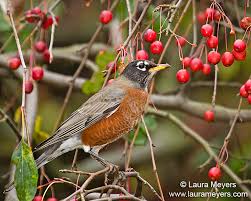
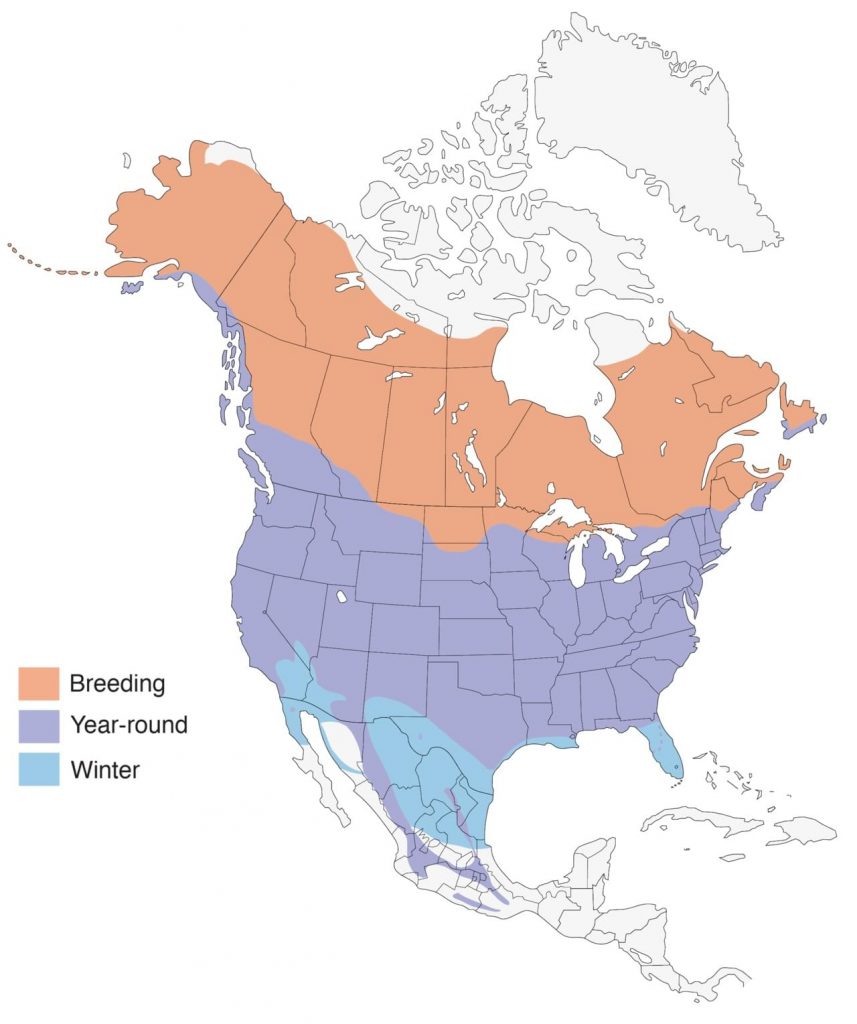
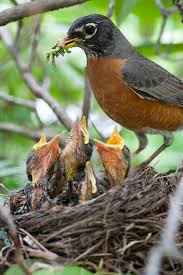
The American robin is an accomplished and pleasing singer. Because the species is so widespread, virtually all North Americans hear, and are warmed by, the lovely melody of the robin during the spring and summer, although many people do not recognize its song as such. Those who do, however, widely regard the early migrating American robin to be a longed-for harbinger of springtime and warmer weather, because this bird often arrives at the northern parts of its range and sings while there is still snow on the ground.


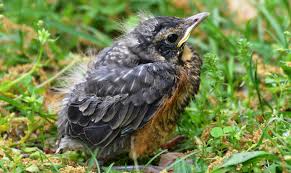

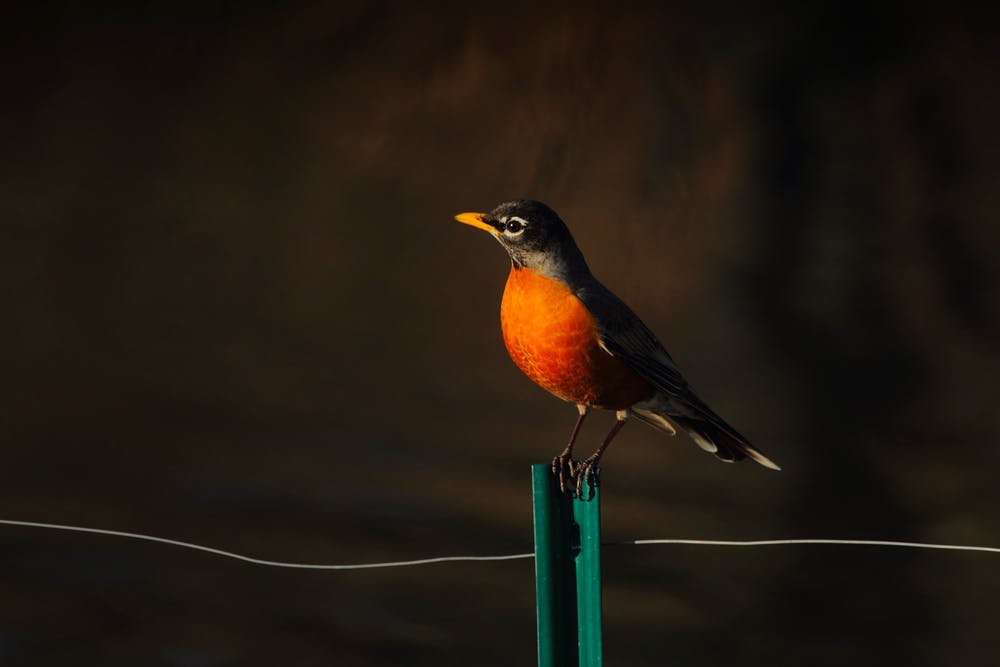
You can attract American Robins to your yard by keeping a fresh water supply and, since Am. Robins are natural ground feeders, feeding trays are ideal. Make a mixture of bird seed, sunflower hearts and mealworms, sprinkle it out on a tray and wait for the robins to arrive. Halve fruits such as apples, pears and plums and leave them on the bird table or the ground so the Robins can easily consume them. They sometimes will also enjoy the suet in your suet feeders, too!
